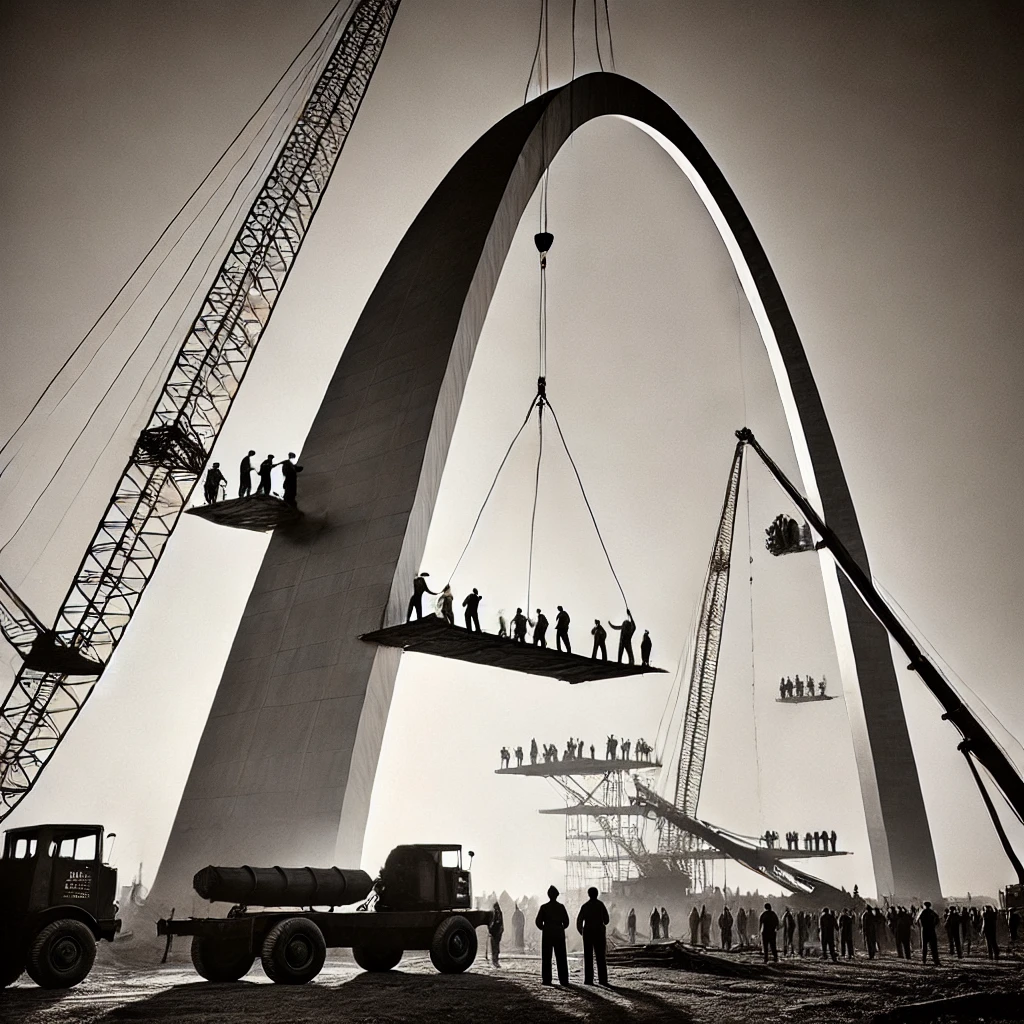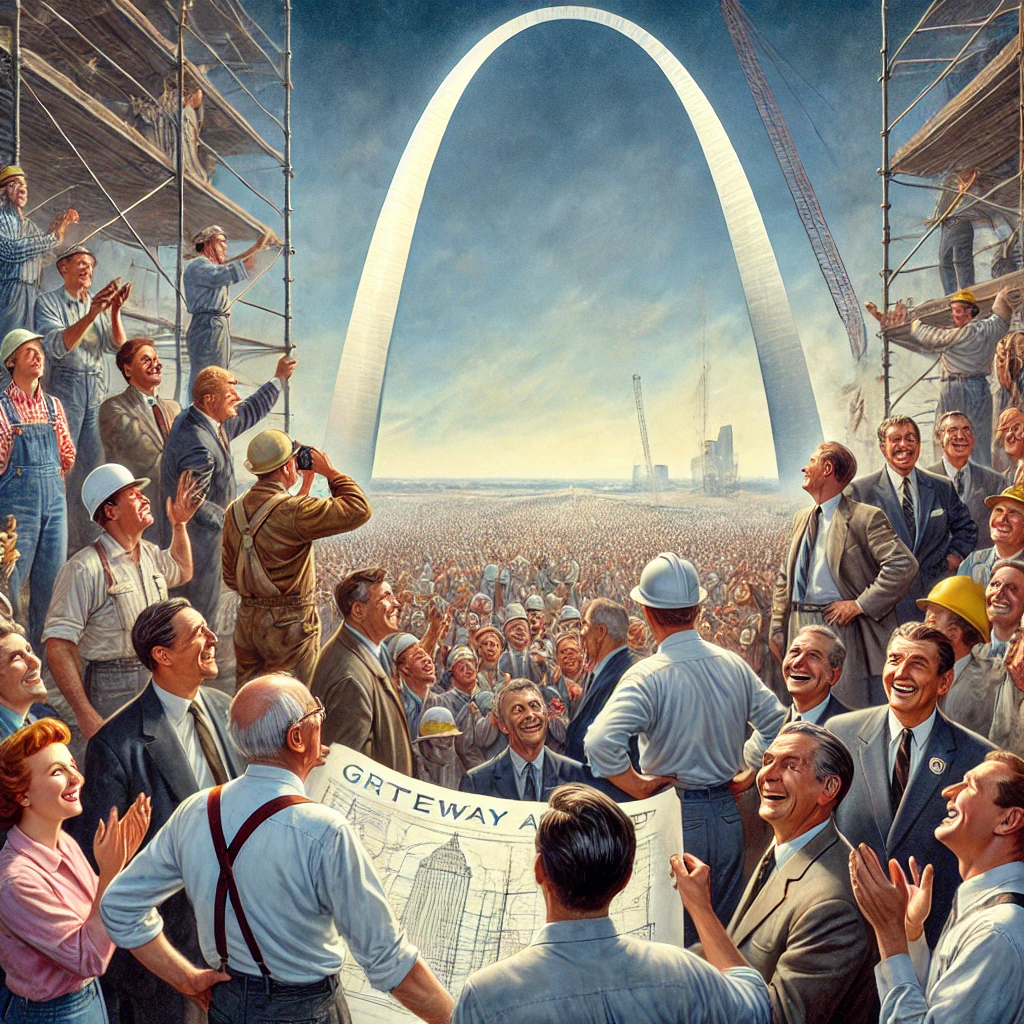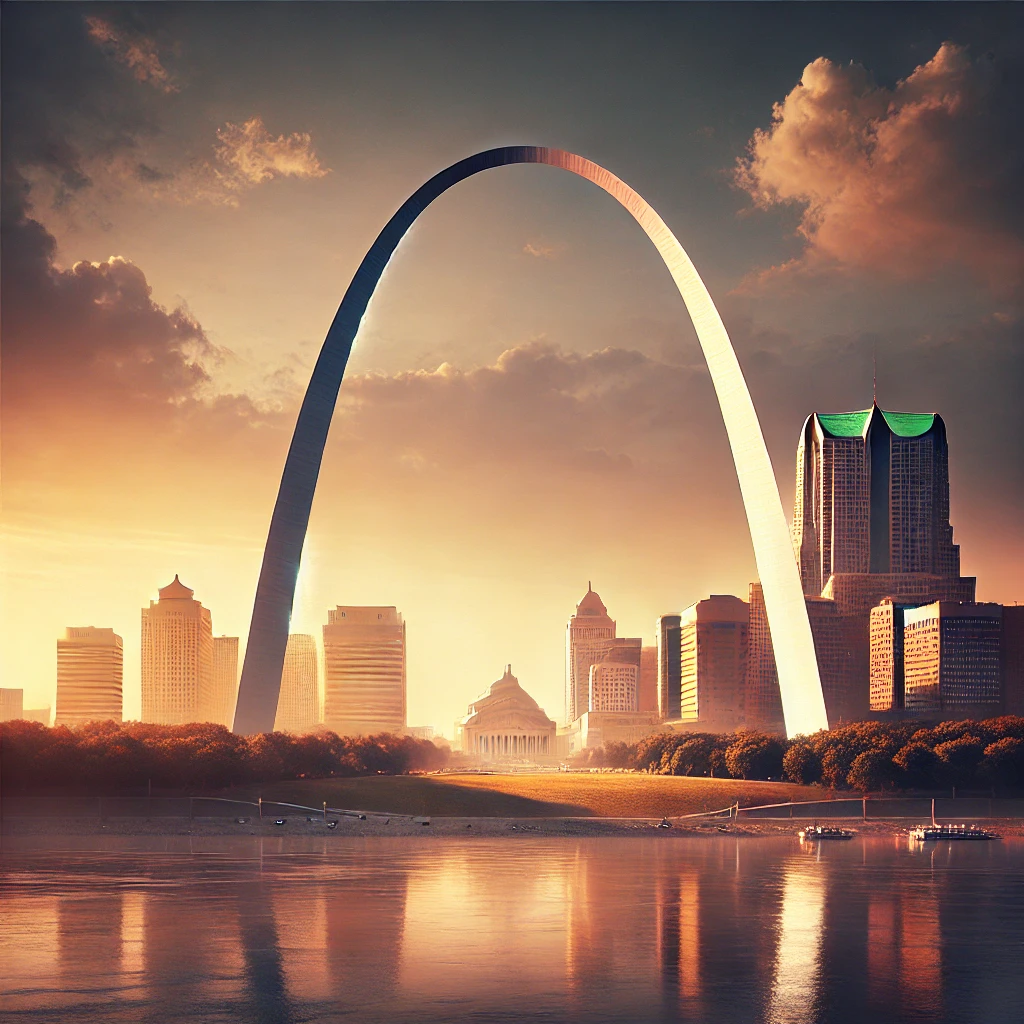On October 28, 1965, the Gateway Arch in St. Louis, Missouri, was officially completed, marking a monumental achievement in architectural design and engineering. Standing at 630 feet, the Gateway Arch is not only the tallest monument in the United States but also an iconic symbol of the city and the westward expansion of the nation. Its graceful, soaring form has captured the imagination of millions and remains a testament to the vision of those who sought to commemorate America’s pioneering spirit.

The Vision Behind the Arch
The idea for the Gateway Arch emerged in the 1930s as part of a broader effort to honor the westward expansion of the United States and to serve as a gateway to the West. In 1947, the city of St. Louis hosted a design competition to create a monument that would reflect this spirit of exploration. The winning design, submitted by architect Eero Saarinen, featured a sleek, stainless-steel arch that would rise majestically above the city.
Saarinen’s vision was to create a structure that symbolized the idea of progress and the journey toward new horizons. He aimed to encapsulate the spirit of exploration and the historical significance of St. Louis as a key point in the westward migration of settlers. Construction of the arch began in 1963 and involved innovative techniques to ensure its stability and aesthetic appeal.

Engineering Marvel
The construction of the Gateway Arch was an engineering marvel that posed numerous challenges. The design required precise calculations and cutting-edge construction techniques to create its unique shape. The arch is composed of 900 tons of stainless steel, with its exterior meticulously crafted to withstand wind and other environmental factors. The construction process involved a complex system of cranes and scaffolding, allowing workers to assemble the arch in two halves that would ultimately be joined at the top.
As the structure reached completion, the excitement in St. Louis grew. The arch became a focal point for the city and a symbol of resilience and innovation. It was a testament to the possibilities of modern engineering, showcasing what could be achieved when creativity and technical expertise come together.
A Monument to History and Heritage
The Gateway Arch was officially dedicated on May 25, 1968, and has since become a national historic landmark and a symbol of the city of St. Louis. It stands as a tribute to the pioneers who traveled westward in search of new opportunities and has drawn millions of visitors eager to experience its grandeur. The arch not only represents a physical gateway but also serves as a metaphorical gateway to the American dream and the ideals of exploration and discovery.

Visitors can take a tram ride to the top of the arch, where they are greeted with breathtaking views of the Mississippi River and the surrounding cityscape. The arch’s interior also features a museum that delves into the history of westward expansion, the construction of the monument, and its significance in American culture. This educational aspect enhances the experience for visitors, making it more than just a sightseeing destination.
The Legacy of the Gateway Arch
The completion of the Gateway Arch has left an indelible mark on St. Louis and the broader American landscape. It has become an iconic image recognized worldwide, representing not only the city but also the spirit of innovation and ambition that defines the nation. The arch has inspired artists, architects, and dreamers, serving as a reminder of the importance of pursuing grand visions and embracing progress.
In addition to its cultural significance, the Gateway Arch has played a vital role in boosting tourism in St. Louis. It draws millions of visitors each year, contributing to the local economy and enhancing the city’s reputation as a cultural and historical destination. The arch stands as a testament to the power of public art and architecture in shaping community identity and fostering a sense of pride among residents.
The completion of the Gateway Arch on October 28, 1965, marked a significant achievement in American history and architecture. As a symbol of exploration, progress, and resilience, the arch continues to inspire and captivate those who encounter it. Its enduring legacy serves as a reminder of the dreams that drive individuals and communities to reach new heights, both literally and metaphorically. Today, the Gateway Arch stands not only as a monument to the past but also as a beacon of hope for the future, celebrating the spirit of adventure and the pursuit of a better life.
